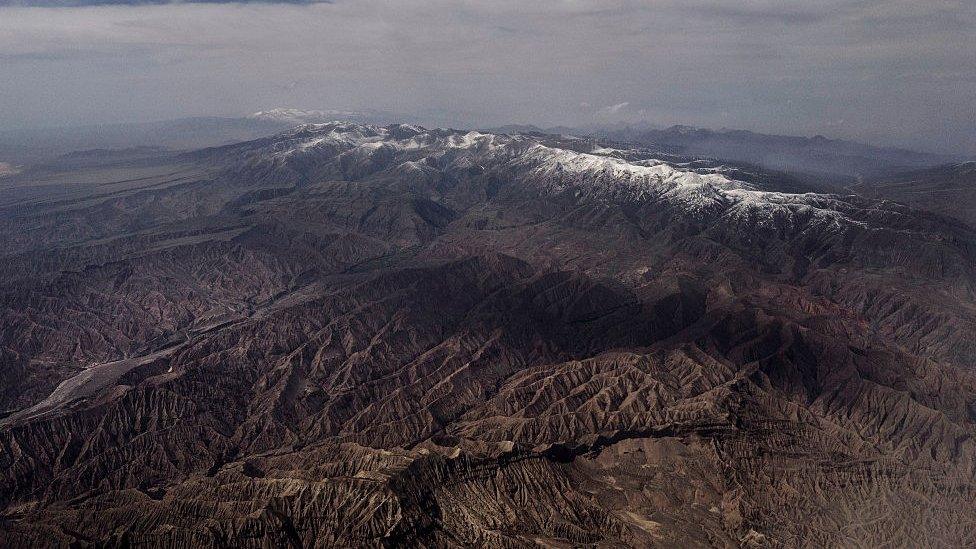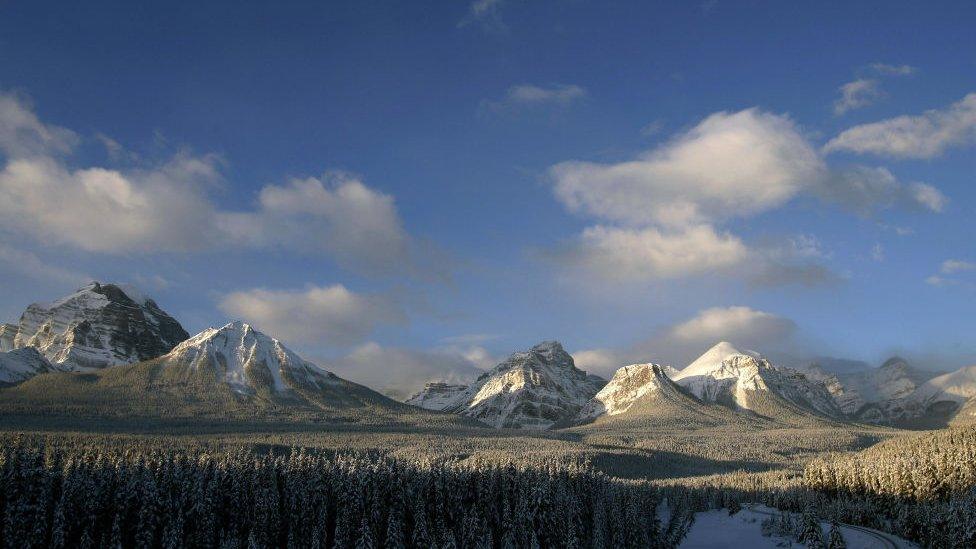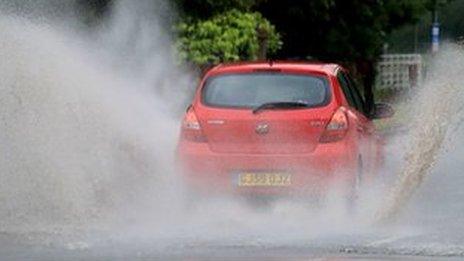Tokyo 2020 Olympics: The Games could be getting fake snow!
- Published
- comments

Some spectators at the canoe event couldn't contain their excitement when they saw the snow
Spectators at the Tokyo Olympics could be in store for some very 'cool' man-made weather!
Members of the organising committee trialled a machine that sprays out artificial snow. People in the stands watching a practice canoe event were treated to the snow shower for five minutes.
The machines use a mixture of crushed ice and air to make the snow. The machines will be able to cover huge areas depending on weather conditions.
Olympic organisers came up with the idea for the machine as a way to reduce heat and humidity levels.
Japan's capital can get extremely hot during the summer months, with temperatures regularly reaching 35 degrees in July. Very high temperatures can put people at risk of heatstroke.
Despite all the excitement surrounding the snow, the result of the trial wasn't necessarily what had been hoped for. The temperature after the test was 25.1 degrees - exactly the same as the temperature beforehand.
Takashi Okamura, who is a member of the organising committee, told the BBC the result was "not as expected". The snow did have other benefits however.
"The advantage of this machine is having a spray device to help the audience feel refreshed - and the amusement factor."
The use of the machines at the games hasn't been given the go-ahead just yet and there are still more tests to come.
Snow machines aren't the first examples of technology being used to control the weather. Check out these other examples below!
The Tibetan Plateau

The Tibetan Plateau provides water to many around the world
Researchers in China are attempting to create the world's largest weather-control machine network.
Last year, the country's Aerospace Science and Technology Corporation came up with a plan for thousands of machines to artificially trigger rainfall.
Did you know?
The Tibetan Plateau is about three miles above sea level. Lots of the world's water comes from here, with many of Asia's major rivers running from the plateau. It serves around two billion people.
The machines will cover an area roughly the same size as the American state of Alaska and will be used to encourage more rainfall in the region of The Tibetan Plateau.
Beijing Olympics

Over 1,000 rockets were used to control the weather at the Beijing Olympics opening ceremony
Organisers at the Beijing Olympics, which took place in 2008, used rockets to ward off the rain. 1,100 rockets were fired from 21 sites in the city ahead of the opening ceremony to ensure the night remained a dry one.
The plan was a success; the rockets stopped a big belt of rain heading towards the Games - the rain fell across the capital but the Olympic stadium was kept rain-free.
Rocky Mountains

Cloud seeding is often used to induce snowfall the Rocky Mountains
Cloud seeding, which affects the amount of precipitation that falls from the clouds, has been around for more than 70 years.
The technique was first discovered by Dr Vincent Schaefer back in 1946 and is frequently used in places like the Rocky Mountains in West America.
Chemicals like silver iodide are sprayed into the clouds which allow icy water particles to condense - or melt. These end up falling as rain or snow.
- Published23 October 2018

- Published11 June 2019

- Published24 April 2019

